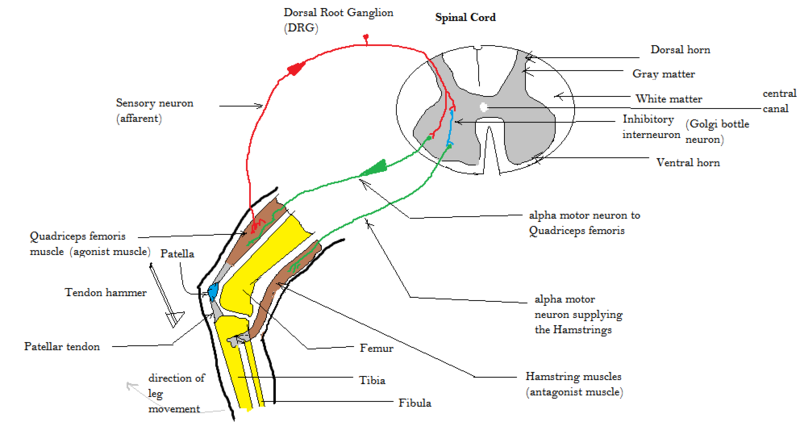Reflex Arc
Specific regions of the CNS coordinate different somatic processes using sensory inputs and motor outputs of peripheral nerves. A simple case is a reflex caused by a synapse between a dorsal sensory neuron axon and a motor neuron in the ventral horn. A simple reflex arc includes the sensory receptor, the sensory (afferent) neuron, an interneuron (except in monosynatpic arcs), the motor (efferent) neuron, and the effector (muscle or gland). More complex arrangements are possible to integrate peripheral sensory information with higher processes. The important regions of the CNS that play a role in somatic processes can be separated into the spinal cord brain stem, diencephalon, cerebral cortex, and subcortical structures.

Figure 11. This figure shows a simple reflex of the spinal cord - the patellar reflex. The red arrow is the sensory neuron, which sends a signal to the gray matter of the spinal cord, when the leg muscle is stretched by the hammer hitting the patellar tendon. The green arrows show the two motor signals leaving the ventral horn to signal the opposing muscles. The quadriceps muscle will contract and the hamstring muscle will be inhibited and remain relaxed, thus extending the leg.